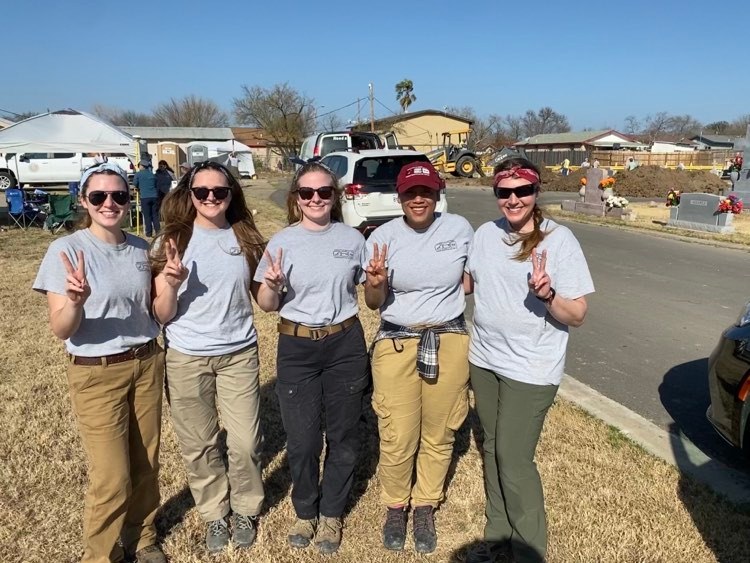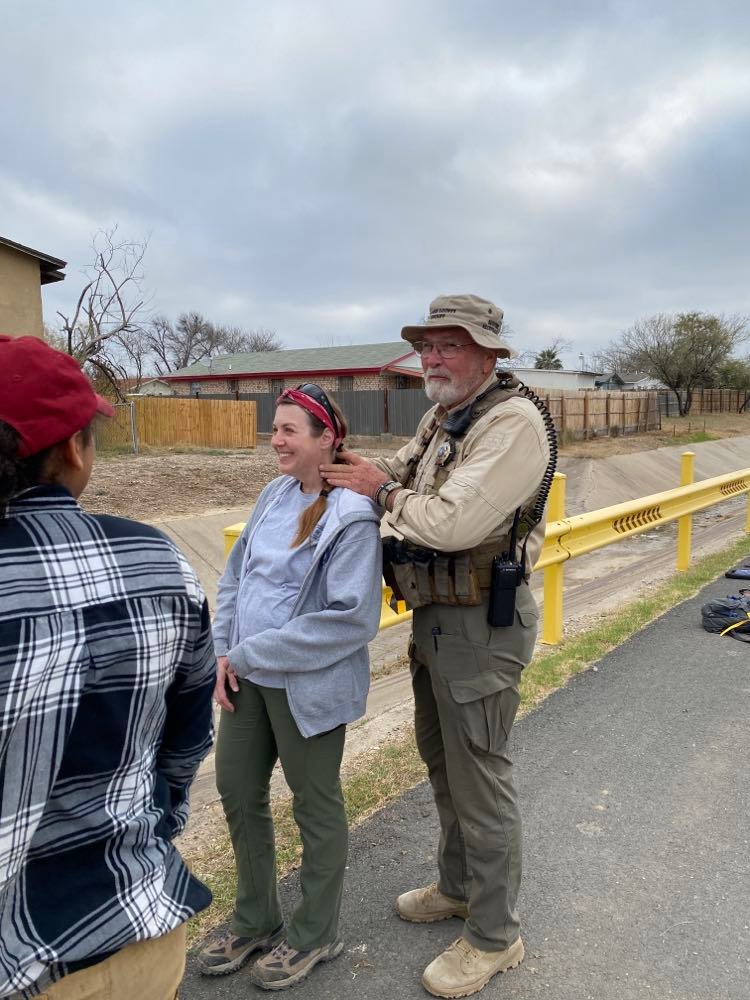
Day 2 started with Kaitlyn’s tai chi and the rest of us rolling out of bed to the hotel breakfast. Once we had finished eating, we packed up the minivan [still yet to be named] and headed to the cemetery to continue our work. At the end of the day yesterday, we had fully prepared the second individual in our area to be removed first thing this morning.
As we prepared for this task, the Texas State team continued the work in their area as well. We removed a bit more of the dirt to better expose the individual on all sides and mapped in the four corners of the burial. After, we devised a plan to safely remove the individual. This ended up including the use of the mattock [my new favorite tool!] to create better stairs and footholds for us to use to step out of the burial while carrying the individual. We then implemented our plan and successfully moved the individual to a new body bag on the surface level then to the intake tent. By the end of the day, we had all together exhumated 3 additional individuals.
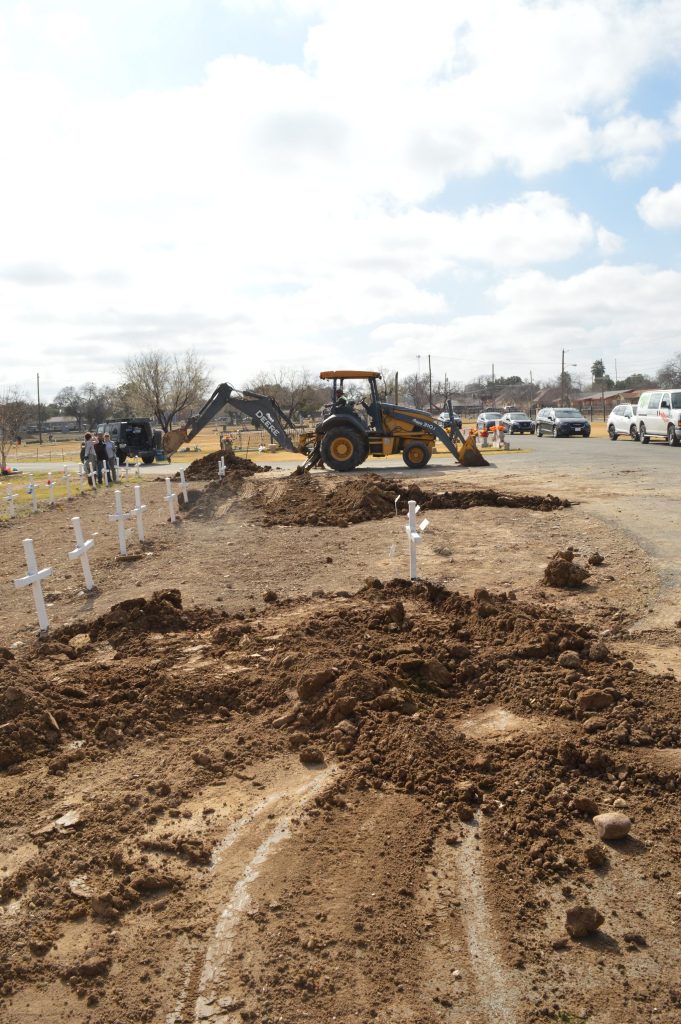
Many of these graves are marked with a white cross and some with a marker stating their associated case number and dates. We proceeded to map in the other grave markers where we plan on continuing to work for the next few days. Although we have some information from the workers at the cemetery and Dr. Spradley about where many individuals are buried, there is no guarantee about where they actually are inside the burial shaft. Once all the burials exposed yesterday had been exhumed, the cemetery workers refilled the holes with the dirt we took out and began excavating the dirt above more suspected burials with a backhoe. This is a very slow process as it is very important to just remove dirt down to the layer above the burials as to protect the individual inside the burial from any excavation damage. Our tools gradually get smaller the closer to the individual we get, from mattocks to shovels to trowels to our hands.
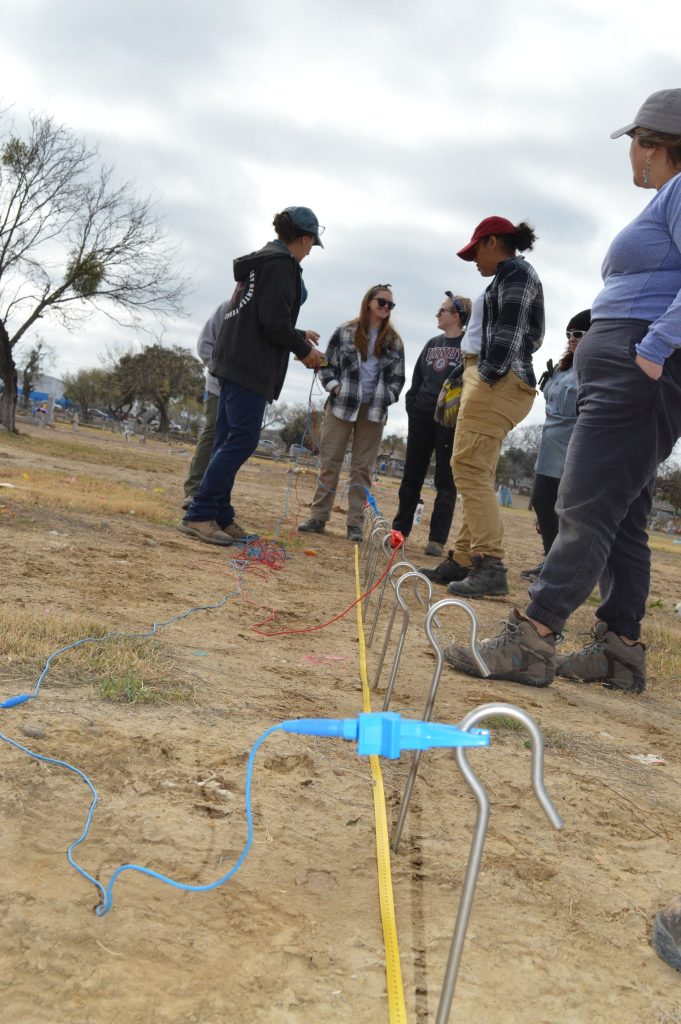
While this was going on, some members from Texas State‘s team taught us about their electromagnetic resistivity device [RES], a device used to survey disturbances in the soil underground. In this context, the RES can be used to identify burials underground. We also got a special knife safety lesson from Deputy Don White [The more you know … with Don!]. Don’s wisdom never fails as he knows just about everything [any anything] we throw at him!
We called it a day early to prepare our plan for the newly uncovered areas. After showers, we went to Laredo Tacos and HEB and came back to our evening debrief. We always go around in a circle and each say one thing we did well and one thing we believe we can improve on, followed by any thoughts and concerns then the plan for tomorrow. This is one of the things I personally believe really helps us as a team. Our communication here travels into the field so we can better work together. Even though it’s day two, it was obvious our meeting yesterday translated to today as the removal of the individual from our site this morning went even better than our removal yesterday.
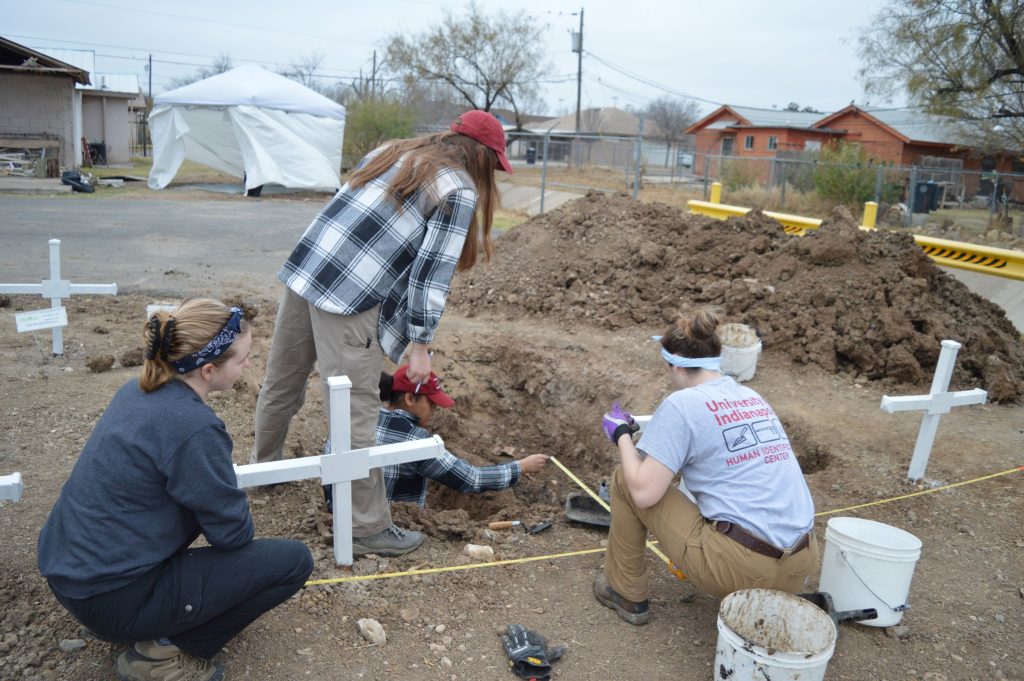
Our team focuses a lot on efficiency and procedure of excavation and exhumation, but we are not blind to the circumstances that brought us here. I, personally, have never dealt with death at this scale, even after two trips of searching the Texas borderlands previously. We hear stories about how these individuals came to be in our care. It can be very overwhelming to be literally face-to-face with this tragedy. The urge to do our absolute best for every individual we can is strong and is the biggest motivator any time we feel sore, fatigued, etc. A great example is each member of the team being told once a day [at least] that we must take a break because we only want to keep pushing forward.
Tomorrow will be a long and physically demanding day, but we are all ready to get back to work. Good things will happen!
–Izzy
(also hi Ray)
